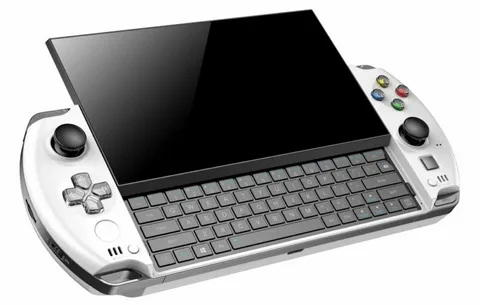Handheld devices have become an integral part of our daily lives, offering a wide range of functionalities that extend beyond communication. From smartphones to portable gaming consoles, these devices are reshaping how we interact with technology. In Pakistan, the adoption and popularity of handheld devices have seen significant growth in recent years. The following sections explore the impact and trends of Handheld devices Pakistan, highlighting their benefits, challenges, and the future potential they hold.
The Surge in Smartphone Usage
One of the most notable handheld devices in Pakistan is the smartphone. Over the past decade, the smartphone market in Pakistan has experienced an explosive growth spurt, with millions of people using them daily for communication, entertainment, and work-related tasks. Smartphones offer easy access to social media platforms, news, educational content, and online services, making them indispensable in the lives of many.
According to recent reports, Pakistan’s smartphone penetration has increased dramatically, with over 80 million smartphone users. This surge is largely driven by the affordability of entry-level models, the expanding mobile internet infrastructure, and the availability of various local and international brands. Smartphones in Pakistan have transitioned from luxury items to essential tools for communication and entertainment, making them a cornerstone of digital inclusion.
The Role of Handheld Devices in Education
Handheld devices have also revolutionized education in Pakistan, offering new opportunities for learning. With the growing internet penetration and the availability of educational apps and online resources, students across Pakistan are now able to access a wealth of information from the palm of their hands.
During the COVID-19 pandemic, handheld devices played a critical role in keeping students engaged with their education. With schools closed for extended periods, many students turned to smartphones and tablets for remote learning. Educational institutions have embraced these devices for both online classes and digital assignments, making learning more flexible and accessible. The potential for handheld devices to bridge educational gaps in remote and underserved regions of Pakistan is undeniable, providing opportunities for students to access quality education regardless of location.
Portable Gaming Consoles and Entertainment
Apart from their educational and professional uses, handheld devices are also making waves in the entertainment industry. Portable gaming consoles, such as the Nintendo Switch and PlayStation Vita, have gained popularity among Pakistani youth. These devices allow users to play their favorite video games on the go, whether traveling, at home, or during breaks at work or school.
Gaming has evolved in Pakistan, and handheld gaming devices or Barcode solution in pakistan play a crucial role in this shift. With the rise of eSports and mobile gaming, handheld consoles have carved out a niche market, with avid gamers looking for high-quality, portable options. Gaming events and tournaments are increasingly popular, and handheld devices are at the forefront of this entertainment revolution.
Challenges in Handheld Device Accessibility
Despite the benefits, several challenges still hinder the widespread adoption of handheld devices in Pakistan. One of the biggest barriers is the cost. Although there is a range of budget-friendly options, the price of high-end smartphones and gaming devices remains out of reach for many people in lower-income groups.
Furthermore, the digital divide between urban and rural areas is still a pressing issue. While urban centers like Karachi, Lahore, and Islamabad are well-equipped with 4G networks, rural areas continue to struggle with limited internet connectivity. This disparity limits the potential of handheld devices to serve as tools for digital learning and economic growth in these regions.
Another challenge is the lack of digital literacy in some segments of the population. While younger generations are generally adept at using smartphones and other handheld devices, older generations and those without access to formal education may find it challenging to navigate these technologies. This knowledge gap can restrict the full benefits of handheld devices, particularly in areas like online banking, e-commerce, and telemedicine.
The Future of Handheld Devices in Pakistan
Looking ahead, the future of handheld devices in Pakistan appears promising. The continued expansion of 5G networks, combined with the growing number of tech-savvy users, will likely lead to further adoption of advanced handheld devices. As internet speeds increase, the capabilities of smartphones and tablets will continue to evolve, offering users faster connections, better entertainment experiences, and more robust educational opportunities.
Moreover, the rise of digital platforms and mobile applications is creating new business opportunities, especially for small and medium-sized enterprises (SMEs). Handheld devices are empowering entrepreneurs to manage their businesses more effectively, reach new customers, and leverage e-commerce platforms to sell products online.
In conclusion, handheld devices have already made a significant impact on Pakistan’s economy, education, and entertainment sectors. As technology continues to advance and access to high-speed internet expands, these devices will undoubtedly play a central role in the country’s digital future. While there are challenges to address, the potential for handheld devices to drive economic development and improve the quality of life for Pakistanis is immense.












Leave a Reply